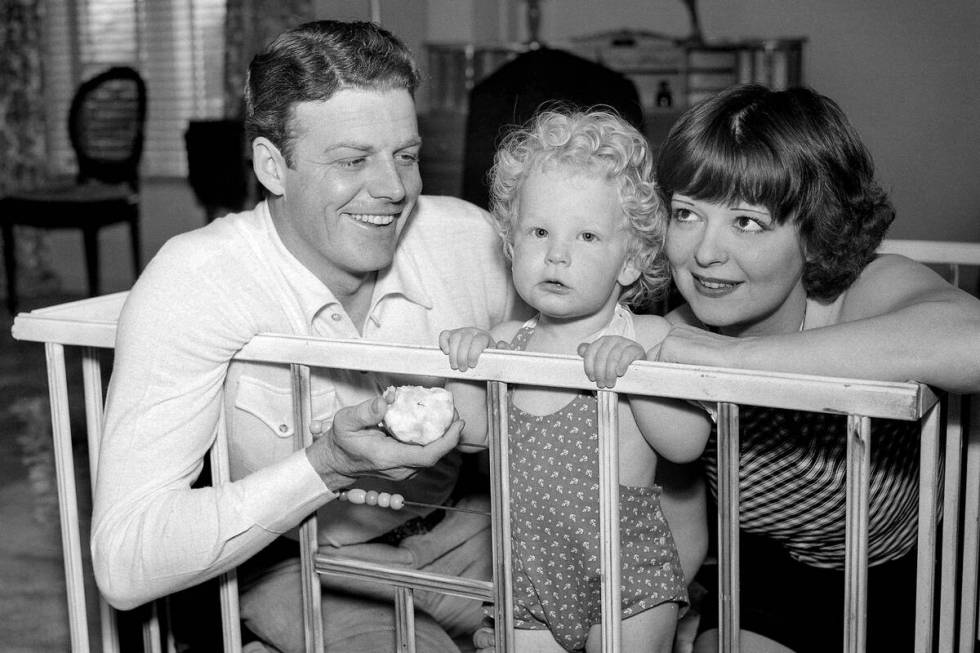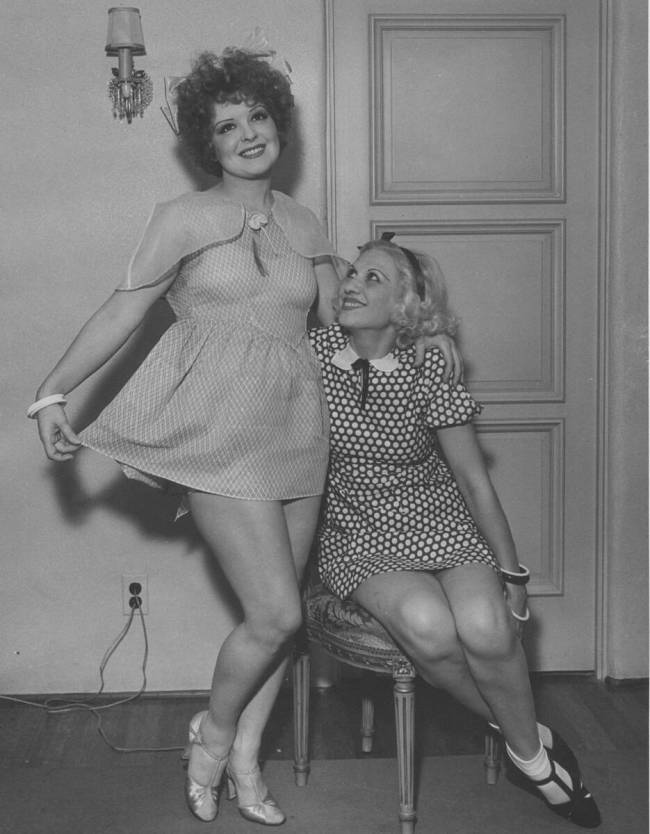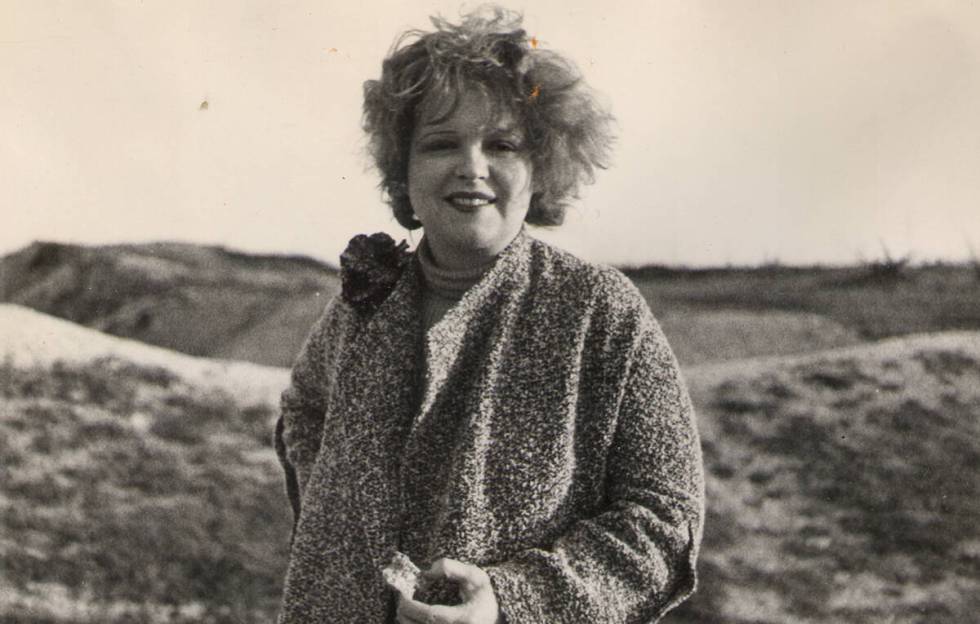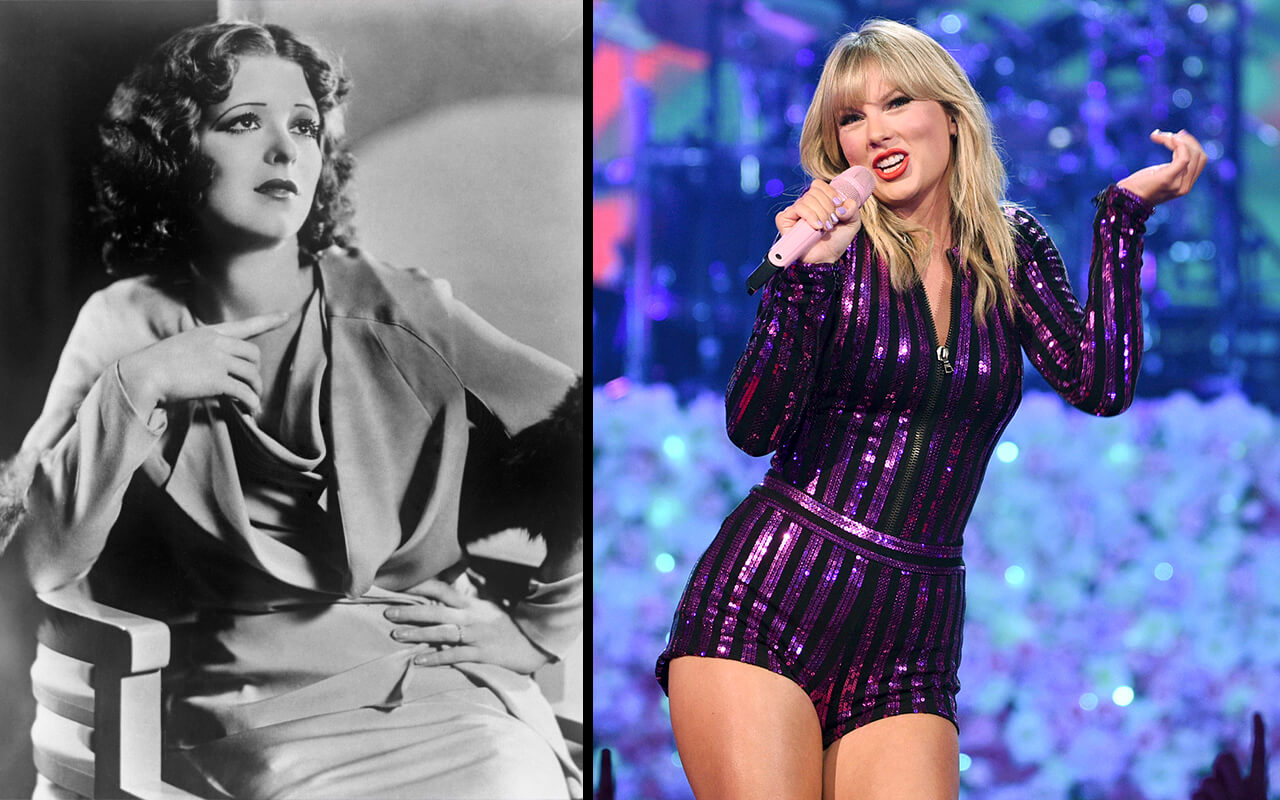A song by pop megastar Taylor Swift has brought new attention to Clara Bow, a major Hollywood film siren in the 1920s who famously left Tinseltown for Southern Nevada to start a new life with with her cowboy actor husband, Rex Bell.
Swift’s “Clara Bow,” released in February, focuses on the fleeting nature of fame for three generations of female performers — Bow, Fleetwood Mac singer Stevie Nicks from the 1970s and Swift herself today, according to Deirdre Clemente, associate director of UNLV’s Reid Public History Institute.
In Bow’s case, the actor who appeared in more than 50 films, mostly during the Silent Era, was outspoken about her sexuality in the 1920s and 1930s and rebelled against her male Hollywood handlers while being revered as an icon by millions of women, Clemente said during an interview with the Las Vegas Review-Journal.
“She had such an incredible impact on fashion and beauty culture at a pivotal point in American history, with the rise of consumerism and feminism,” Clemente said.

“Clara Bow has been the encapsulation of everything that happened then,” Clemente said. “And then she chose to leave to become a wife and mother in Nevada. She really did choose this on her own.”
Mark Hall-Patton, a local historian and retired former administrator for the Clark County Museum system, said that, thanks to Swift’s song, Bow “has come out of a certain level of obscurity that she doesn’t deserve.”
She had such an incredible impact on fashion and beauty culture at a pivotal point in American history, with the rise of consumerism and feminism."
Deirdre Clemente, associate director of the UNLV’s Reid Public History Institute
Bow, pictured frequently in magazines and newspapers in the Roaring ’20s, had her own sense of style and influenced American females in her choice of clothing — especially wearing pants and jodhpurs — as well as cosmetics and skin care products, and when people found out she had red hair, women all over the country used henna to color theirs red, Clemente said.

‘Not as sunshiny and rosy as people think’

Bow’s renown reached its height with her starring role at age 22 as shop girl Betty Lou in the 1927 silent movie “It.” The famous moniker “The It Girl” stuck to Bow throughout her life and is one of the reasons why Swift featured the actor in her song, Clemente said.
Swift’s point is “getting things that you wanted and when you realize what you want isn’t the best thing for you, with all of this fame and all of this demand, it’s not as sunshiny and rosy as people think,” Clemente said.
“She (Swift) understands the double-edge sword of celebrity,” Clemente said. “It can be everything you wanted and so incapacitating at the same time. I think Taylor Swift considers Clara Bow as much more than ‘The It Girl.’ ”
The first line of Swift’s lyrics for the song plays off the well-known, even manipulative type of conversation by a male Hollywood figure with an aspiring starlet, “You look like Clara Bow in this light.”
The lyrics go on to say, “You look like Stevie Nicks / In ’75, the hair and lips.”

Toward the end, the song says “You look like Taylor Swift / In this light / We’re loving it / You’ve got edge she never did / The future’s bright / … Dazzling.”
Like Swift, who has had difficulties with song and record contracts she signed, Bow had similar dissatisfaction and clashes with film studios over her movie contracts and pay in male-dominated Hollywood, according to Clemente.
“They (film producers) just used her as a cash cow,” denying Bow parts to showcase her acting skills in favor of exploiting her with roles emphasizing her looks until one day around 1930 she decided “Screw you guys; you were jerks” and left the industry, Clemente said.
“You can see why Taylor Swift would find a lot of inspiration with Clara Bow,” Clemente said.
Bow met the tall and good-looking Bell (real name George Beldam) when he co-starred with her during filming of the movie “True to the Navy,” released in 1930, Clemente said.
Bow had endured years of incessant publicity about her love affairs, her drug abuse and struggles with mental illness, about which she spoke openly anyway, Clemente said.

Getting away from spotlight
Hall-Patton said that Bell himself was largely responsible for persuading Bow to make the move to Southern Nevada.
“Hollywood was not good for her mental health,” he said. “She got overly into it, the party scenes. It was, ‘Let’s get over that, the drugs and parties, and start a new life.’ ”

Bow and Bell went to Southern Nevada starting in 1929, and by 1931 the year the couple married, acquired a 400,000-acre ranch several miles west of Searchlight — 58 miles south of Las Vegas — eventually called Walking Box, Clemente said.
Over the next 13 years living at their cattle and horse ranch, they had two sons, Rex Jr., who served as Clark County district attorney and who died in 2011, and George Beldam Jr.
While Bell worked the ranch like a real cowboy, Bow did not, favoring lounging in the sun and reading voraciously, Clemente said.
Bow and Rex separated in the mid-1940s, but they never divorced. Bow moved back to Southern California’s Culver City, where she remained for most of her life until she died of a heart attack at age 60 in 1965, Clemente said.
Bow’s last public appearance was to attend Rex Bell’s funeral in 1962, Hall-Patton said.
“Even though they had been separated for a number of years, there was still affection,” he said.
In April, Clemente and the Reid Institute hosted an online forum, “From Flappers to Swifties: The Cultural Legacy of Clara Bow,” that featured experts and members of Bow’s family discussing the significance of the actor’s legacy and Swift mentioning her in song.

Contact Jeff Burbank at jburbank@reviewjournal.com or 702-383-0382. Follow him @JeffBurbank2 on X.




